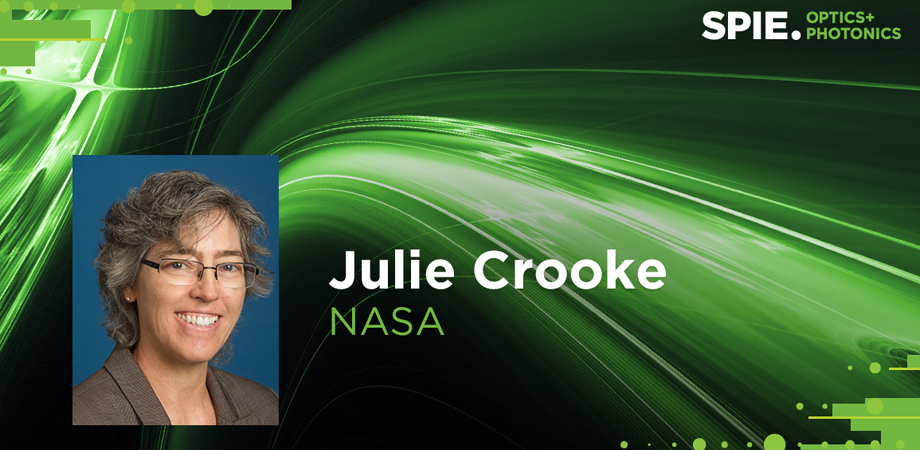The Habitable Worlds Observatory: NASA’s next great astrophysics project

“I love all sizes of missions — from balloons to flagships,” says Julie Crooke. “However, flagships are a significant portion of NASA’s brand. NASA’s flagships provide the ‘powerhouse’ science that other missions are not able to attempt due to their size and resources. I want to help enable them to be the best they can be — scientifically-performance-wise as well as ensuring their delivery on-cost and on-schedule.”
At NASA, Crooke is the program executive for the Great Observatory Maturation Program (GOMAP) for the Habitable Worlds Observatory (HWO). The multiple aspects of her job include developing strategies, plans, processes, structures, frameworks, and policies for GOMAP and for several of NASA’s flagship missions. Crooke will discuss her work and HWO at the 2023 SPIE Optics + Photonics symposium in San Diego in August.
What led to your interest in astronomy and astrophysics? And what made you interested in working with telescopes?
My undergraduate physics professor, Dr. Sheridan Simon, was an astrophysicist. He brought astrophysics, astronomy, and physics to life for me. I’ve been fortunate to help build five NASA flagships in my career as an optical systems engineer: the HST 1st servicing mission, the Cassini-CIRS, Spitzer-IRAC, STEREO, and ICESAT1-GLAS.
I worked in the early days, investing in technologies for TPF-I, LISA, Euclid, the Joint Dark Energy Mission (JDEM) which is now the Roman Space Telescope (RST), and the X-ray Constellation (Con-X) which became Lynx. I also worked on the proposals that were awarded, including those of the Neutron Star Interior Composition Explorer (NICER); the Transiting Exoplanet Survey Satellite (TESS); and the Trans-Iron Galactic Element Recorder for the International Space Station (TIGERISS).
I’ve been working on what is now HWO since 2007 with the global community. Previous versions were called the Space Telescope for the 2020s (ST2020), the Advanced Technology Large Aperture Space Telescope (ATLAST), and the Large Ultraviolet Optical Infrared Surveyor (LUVOIR).
What aspects of the HWO do you find the most interesting?
Historically — and that’s only as far back as the 1990s and 2000s — many in the astronomical community thought it was not possible to do an equally capable mission for exoplanets as well as for general astrophysics. I love that when everyone works together, we can find a way to enable both of these efforts. I love a good challenge and am thrilled that Astro2020 and the broad astronomical community has embraced a joint exoplanetary and general astronomical observatory, now called HWO. I also love that it will be able to do amazing remote characterization of many solar-system bodies including planets, moons, and potentially smaller bodies.
What are some of the challenges to building the HWO? How are these challenges being met?
All flagships, including HWO have many challenges. HWO’s hardest challenge is achieving the ultrastability it needs to capture high-contrast coronagraphy. Flagships are complex and, due to their complexity, flagships need different and evolved management strategies. This is what GOMAP is all about. There are more details available in the public LUVOIR Final Report, Chapter 12 and this case study.
What do you think we’ll learn from HWO?
HWO will be able to constrain the frequency of potential life in our nearby solar system and possibly begin to answer, “Are we alone?” It will provide a “zoology of planetary systems” in our “solar neighborhood” to help provide context of how unique our own Solar System is. HWO will begin to tell the story of life in the Universe as described in the AURA report, “From Cosmic Birth to Living Earths.” It will remotely revisit multiple solar-system bodies, and in some cases, obtain near “flyby quality” imaging and spectroscopy of many solar-system bodies.
Some of the most profound questions HWO will answer include those we have not yet even thought of asking, in the same way that all previous flagships have given surprise findings to the global community.
| Enjoy this article? Get similar news in your inbox |
|



